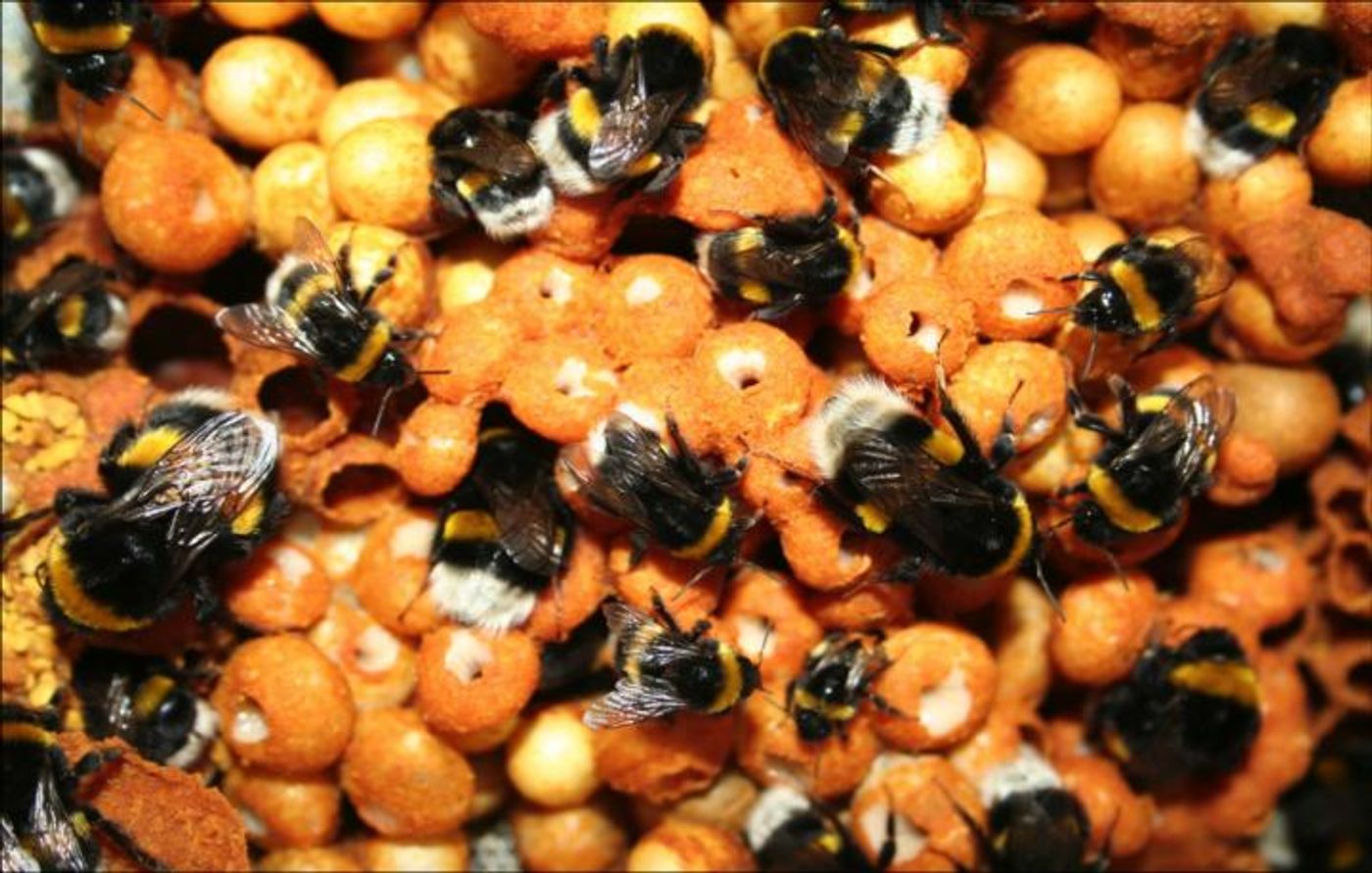Pesticide Exposure Changes Gene Expression in Bumblebees
Pesticides are commonly used all over the world. Researchers decided to take a biomedical approach to examine the impact of two different pesticides on gene expression in bumblebees, which are important pollinators. They found that bumblebee workers and queens were both affected, but in different ways. One pesticide, clothianidin, had a much more dramatic influence as well. The findings have been reported in Molecular Ecology.
“Governments had approved what they thought were ‘safe’ levels, but pesticides intoxicate many pollinators, reducing their dexterity and cognition and ultimately survival. This is a major risk because pollinators are declining worldwide yet are essential for maintaining the stability of the ecosystem and for pollinating crops,” said the lead author of the study Dr. Yannick Wurm of Queen Mary's School of Biological and Chemical Sciences. “While newer pesticide evaluation aims to consider the impact on behavior, our work demonstrates a highly sensitive approach that can dramatically improve how we evaluate the effects of pesticides.”
In this study, either clothianidin or imidacloprid, both in the neonicotinoid class of pesticides and in current use, were applied to bumblebee colonies at levels that mimicked those in the field. The scientists found that clothianidin had a stronger effect than imidacloprid.
The investigators controlled for the social environment and worker age of the bees, and determined that the expression of 55 genes was altered after clothianidin exposure; 31 genes were more active while the remainder were reduced. The researchers suspect that some of those genes are trying to rid the body of toxins. Other gene expression changes may indicate why neonicotinoids change bumblebee behavior. In queens, however, only seventeen genes showed different expression levels; sixteen of those were higher after clothianidin pesticide exposure.
“This shows that worker and queen bumblebees are differently wired and that the pesticides do not affect them in the same way. As workers and queens perform different but complementary activities essential for colony function, improving our understanding of how both types of colony member are affected by pesticides is vital for assessing the risks these chemicals pose,” said the first author of the report Dr. Joe Colgan of Queen Mary University of London (QUML).
The investigators are hopeful that this approach will now be used for broader studies, so that we will know more about how various pesticides are affecting different species on the molecular level.
“We examined the effects of two pesticides on one species of bumblebee. But hundreds of pesticides are authorized, and their effects are likely to substantially differ across the 200,000 pollinating insect species which also include other bees, wasps, flies, moths, and butterflies,” noted Colgan.
“Our work demonstrates that the type of high-resolution molecular approach that has changed the way human diseases are researched and diagnosed, can also be applied to beneficial pollinators. This approach provides an unprecedented view of how bees are being affected by pesticides and works at large scale. It can fundamentally improve how we evaluate the toxicity of chemicals we put into nature,” Wurm concluded.
Recent research done at the University of Illinois has also revealed new information about how neonicotinoids impact ground-nesting bees, which include most bee species. This work was published in Scientific Reports.
“This is an important piece of work because it’s one of the first studies to look at realistic concentrations of pesticides that you would find in the soil as a route of exposure for bees. It’s a very under-explored route, especially for some of the more solitary species that nest in the ground,” said Nick Anderson, a graduate student in entomology, who led the study with his advisor, Alex Harmon-Threatt, a professor of entomology.
Unlike honey and bumble bees, ground nesting bees stay underground for about 49 weeks, coming out for three to mate, lay eggs and forage.
After mimicking environmental neonicotinoid exposure, the female bees were found to live shorter lives while males were longer lived. There may be small changes in bee development due to the pesticides, but more work will be required to understand what’s happening to the bees. Genetic studies, as illustrated by the first report, could help in that effort.
Sources: QUML, University of Illinois at Urbana-Champaign, Scientific Reports, Molecular Ecology









